Leningrad tests of the German Famo tractor. Five months before the war
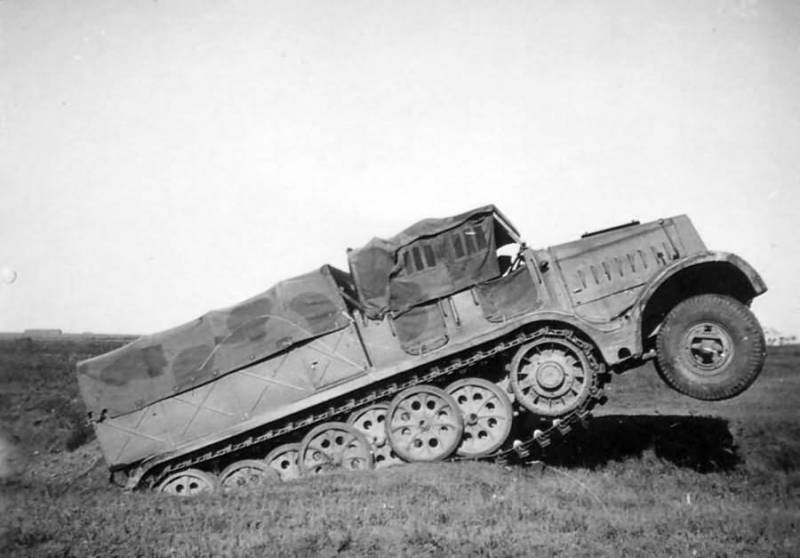
There are no high-quality images from the Leningrad tests of the Sd.Kfz.9 Famo in the public domain, so you have to limit yourself to third-party archives. Source: worldwarphotos.info
German tractor
The secret report of the Red Army artillery research and development testing ground on the tests of the 18-ton Famo tractor was released in February 1941. In the traditions of that time, the car was called a "tractor", although only the caterpillars were related to Famo. The main goal was to determine the suitability of a half-track tractor for towing heavy artillery systems of high power. At the same time, it was planned to test at the same time the 12-ton half-track Daimler-Benz Sd.Kfz.8 tractor, but it came to the test site in a faulty condition. According to the report, he was already in an inoperative state entered the artillery range from the "tank" range in Kubinka. It is not known whether it was put out of action at the GABTU, but the gunners were unable to repair the Daimler-Benz engine on their own. There was a serious breakdown: water from the cooling system entered the engine crankcase. When the engine was disassembled, it turned out that the head gasket was in good condition, and three of the six cylinder slingers were destroyed. Water flow was observed through rubber rings between the cylinder liner block and, when the engine was running, reached two liters per hour. Quite possibly, as the testers noted, there were cracks in the cylinder block as well. In general, the landfill specialists did not bother with restoring the Daimler-Benz Sd.Kfz.8 engine and started testing their older brother, the Sd.Kfz.9 Famo.
A German tractor, bought shortly before the war in Germany, had to work hard: at the test site from January 25 to February 5, 1941, he had to carry parts of heavy artillery pieces through snow half a meter deep, along rolled highways and country roads. It is noteworthy that the organizers hoped to conduct comparative tests of the "German" with the domestic heavy tractor "Voroshilovets". But ... At the beginning of 1941, the artillery range did not have a working tractor at its disposal.
We must pay tribute to the specialists of the artillery range: the test program was verified to the smallest detail. For example, on the pre-laid out sections of the highway along which the German Famo was rolled, the angles of ascent and descent were indicated up to minutes. This is strikingly different from the testing of captured equipment in wartime, when engineers sometimes did not even have suitable training grounds. For Famo, four trailers of different weights were prepared: a barrel wagon of a 305-mm Skoda cannon (19 tons), a machine of the same weapons (20 tons), a 211-mm German howitzer barrel wagon (11 tons) and its 12-ton machine. On one of the sections of the rolled highway, a tractor-tractor with an 11-ton trailer accelerated to an average of 43,4 km / h - a decent indicator for a heavy vehicle. However, it was impossible to operate the giant half-track vehicle normally at such speeds, so the workers were at speeds up to 15 km / h.
Famo took snow virgin lands of half a meter depth at speeds from 3,5 to 11,3 km / h, depending on the weight of the trailer. Moreover, before the tests, the car previously made a track in the snow without a trailer, otherwise it would immediately get bogged down. When it came to storming the slopes, with the heaviest trailer, the German tractor gave up in front of an 11-degree slope covered with 87 cm of snow. In general, the permeability of the tractor with a 20-ton trailer was recognized by the test site as not entirely satisfactory.
A separate program was testing the tractor winch. 5 people had to unwind the 4600-meter cable. According to the most conservative estimates, its maximum tractive effort exceeded 5 kgf. After some torture of the unit, the testers wrote in the report that "the winch is successful in design and works quite reliably, and also has clear advantages over the winches of the domestic tractors" Comintern "," Voroshilovets "and" STZ-XNUMX ".
Clumsy giant
The 18 ton Famo was a hefty car. Photos from tests at the Leningrad test site in 1941 in good quality could not be found, but archival images from other sources help to form an impression of the tractor. Its height almost reached three meters, and its length exceeded eight. Naturally, this colossus did not like to turn very much. As the test engineers of the artillery range noted, the turning radius on 26-cm snow was 18 meters. And it's to the right. When it came to the left turn, the Famo snapped the safety pin of the right track tensioner. They replaced it in 22 minutes and continued experiments with a left turn. The radius was from 19 to 21 meters. When the tractors picked up the machine of the Czechoslovak cannon, the turning radius became generally unpredictable: from 22,5 to 32,25 meters. On the snow, the Famo was almost indifferent to where and how the wheels were turned, the movement was mainly along the radius of the tracks. As a result, the German tractor-tractor successfully failed all the maneuvering tests. The German could not turn in the artillery park with trailers categorically. After an overnight winter stop, Famo almost completely loses its ability to maneuver: it needs to ride for 10-15 minutes before the oil in the differential box warms up. Such awkwardness of the tractor is explained by the specifics of the half-track layout, aggravated by the large ratio of the length of the supporting surface of the track to the track - 1,8. In general, the wheels seriously hampered the movement of the car on muddy roads. At the test site, the corresponding tests were not carried out, but the calculations of the specific pressure on the ground did not advise the owners of the giant to meddle in the mud. The wheels pressed on the ground with a force of 4 kg / cm2, and caterpillars - 0,7-2,33 kg / cm2 - the front end of the tractor had a kind of plow in the form of two wheels. At the same time, Famo's grip on the road was always insufficient and with a hook load of about 3 tons, the tractor began to slip.
Now a little about how the Famo motor was animated. It was launched for the first time at the test site on January 25, preliminary warmed up with hot water and towed by two Kommunar tractors. The German 12-cylinder petrol thing just didn't want to start. After keeping the car in the cold for two days, Famo decided to start with an electric starter. The temperature outside the tractor was quite harmless - minus 14 degrees. Initially, the engine was warmed up with hot water to 80 degrees, which took 170 liters (or 11 buckets) with a cooling system capacity of 90 liters. An attempt to start the engine with an electric starter was in vain. Famo also had an inertial starter, an improved analogue of the usual "crooked starter". Four people spun the inertia system for three minutes, but the Maybach 12-cylinder engine was silent. Three times in a row! As a result, tractors came to the rescue again, dragging the Famo with the gear engaged and ignition. It took only 20 meters. To justify the German tractor, the testers in the report write that in all subsequent cases, the engine reliably started from the electric starter. At the same time, the temperature dropped to minus 25 degrees on some days. But in the end, the motor, which requires expensive high-octane gasoline, was rejected by the testers due to excessive fuel consumption. On the highway in winter, a tractor with a trailer could travel no more than 150 kilometers at one gas station.
The high production culture and well thought-out design are evidenced by the high reliability of the machine. For two and a half thousand test kilometers, the Famo found only cracks in the exhaust pipe, a speedometer cable burst and a safety pin of the track tensioner. This, we recall, in the conditions of Russian frosts.
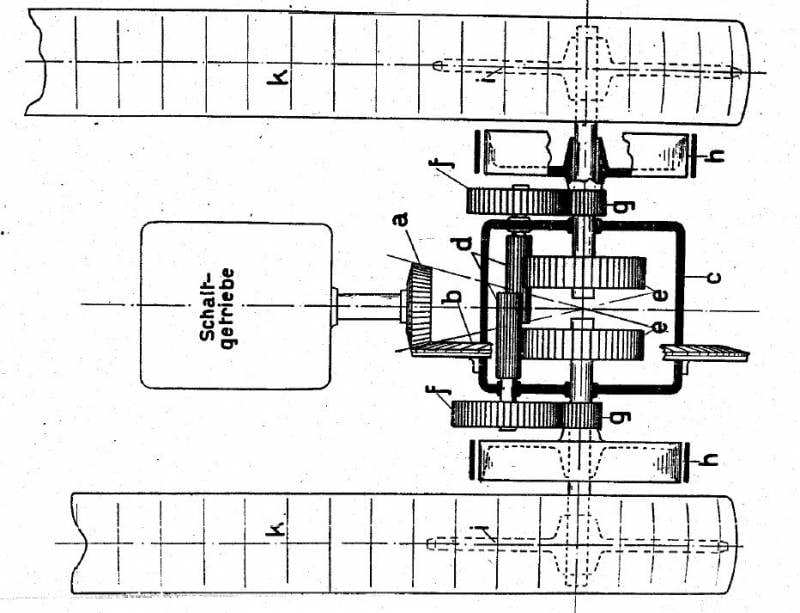
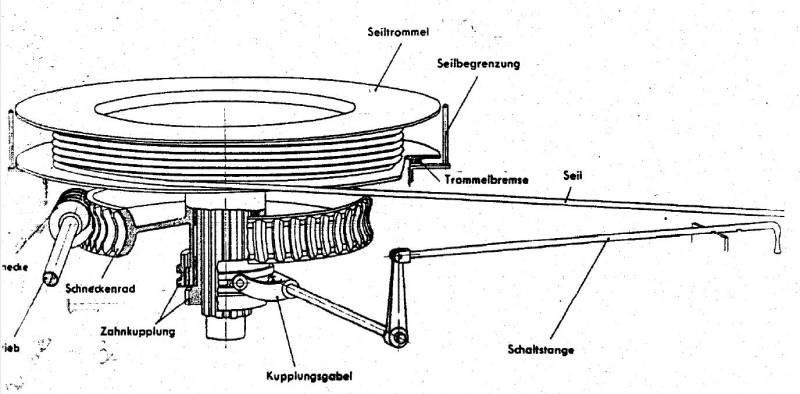
Double differential and winch circuits. They made an impression on the Soviet testers. Source: Report of the Artillery Research Experimental Range of the Red Army. 1941 year
The torsion bar suspension and chassis aroused great interest among domestic researchers. Large staggered rollers, firstly, spared the rubber tires, and, secondly, evenly distributed the load on the ground. The unusual mating of the tracks with the help of pins on needle bearings obviously reduced the losses due to rotation of the tracks, but seriously complicated and increased the cost of the design. Therefore, directly in the report, test engineers write that before putting into production such solutions, it is necessary to conduct thorough tests of German tracks. If they only knew that in just six months, the domestic tank building industry will have completely different tasks: to promptly evacuate production inland and organize mass production of armored vehicles at the lowest cost! ..
Summing up the winter tests of the heavy German Famo, Soviet testers did not recommend using it as an artillery tractor. Despite the good ergonomics, reliability and separate well-thought-out units, the gunners were not satisfied with the clumsiness, the gluttonous carburetor engine and insufficient grip.
In this story the Famo is not over with the 18 ton tractor. In March 1941, a report on the results of this test appeared on the table of the Deputy People's Commissar of Defense Marshal Grigory Kulik. The author was Major General of Artillery Vasily Khokhlov. In the material, he already directly, albeit in absentia, compares the German tractor with the domestic "Voroshilovets". Fairly points to a much weaker Famo engine, which, nevertheless, allows you to keep up with the powerful diesel Voroshilovets on the highway. Further down the chain, Kulik writes to Voroshilov and reports on the depressing situation with high-speed artillery tractors in the Red Army. Stones fly into the outdated STZ-5 and ST-2 at that time, as well as into the heavy Voroshilovets. Of course, Kulik did not directly dare to scold the tractor named after the marshal in a letter to Voroshilov, but pointed to his V-2V diesel engine. The gunners were not satisfied with its resource of 100 engine hours, and the brilliant carburetor Maybach in this sense upset the military even more. Kulik writes to Voroshilov in this regard (the spelling features have been preserved):
As a result, Kulik asks Voroshilov to oblige the People's Commissariat of Medium Machine Building to develop and manufacture three tractors at once - for regimental, divisional and corps artillery. Not weak such requirements, I must say. But that's not all. Kulik strongly recommends Voroshilov to contribute to the development of prototypes of a whole family of high-speed diesel engines.
In less than four months, war will begin, and the gunners' conclusions will receive mixed confirmation on the battlefields. Outdated and less than perfect tractors will prevail over the elegantly executed half-track designs of the engineers of the Third Reich. Field tests do not always guarantee objectivity, especially in military affairs.
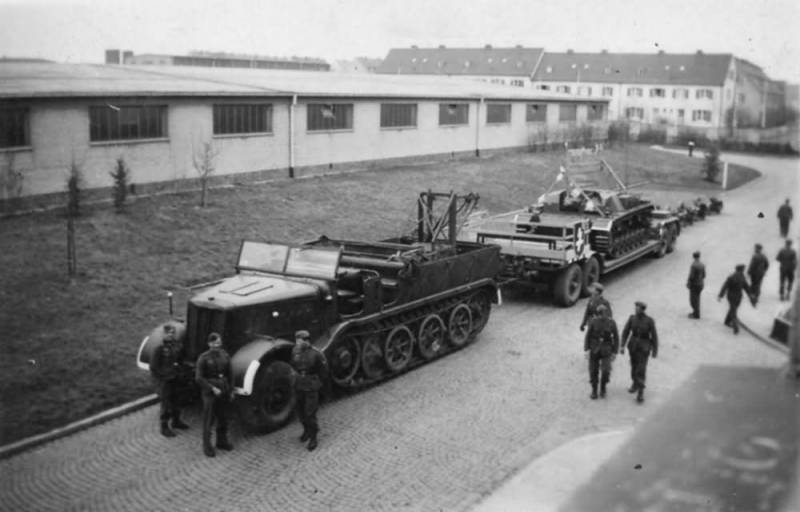
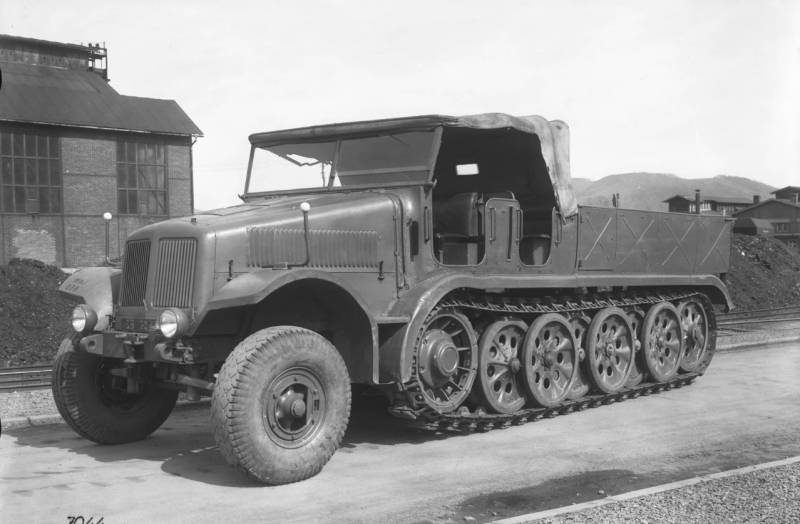
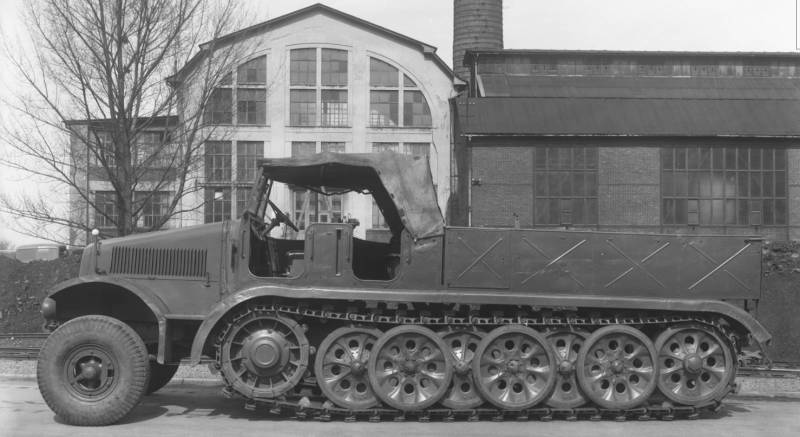
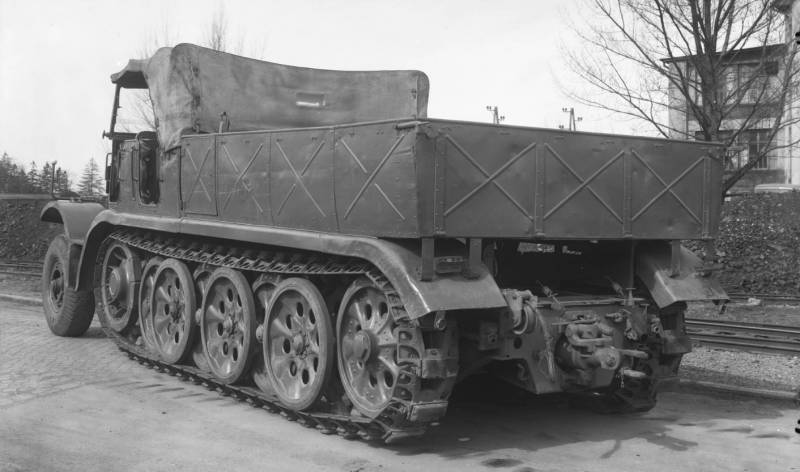
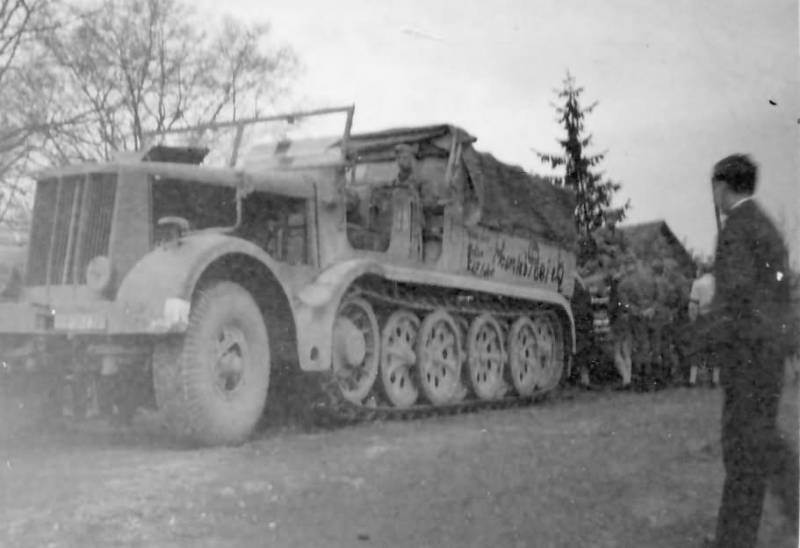

Information